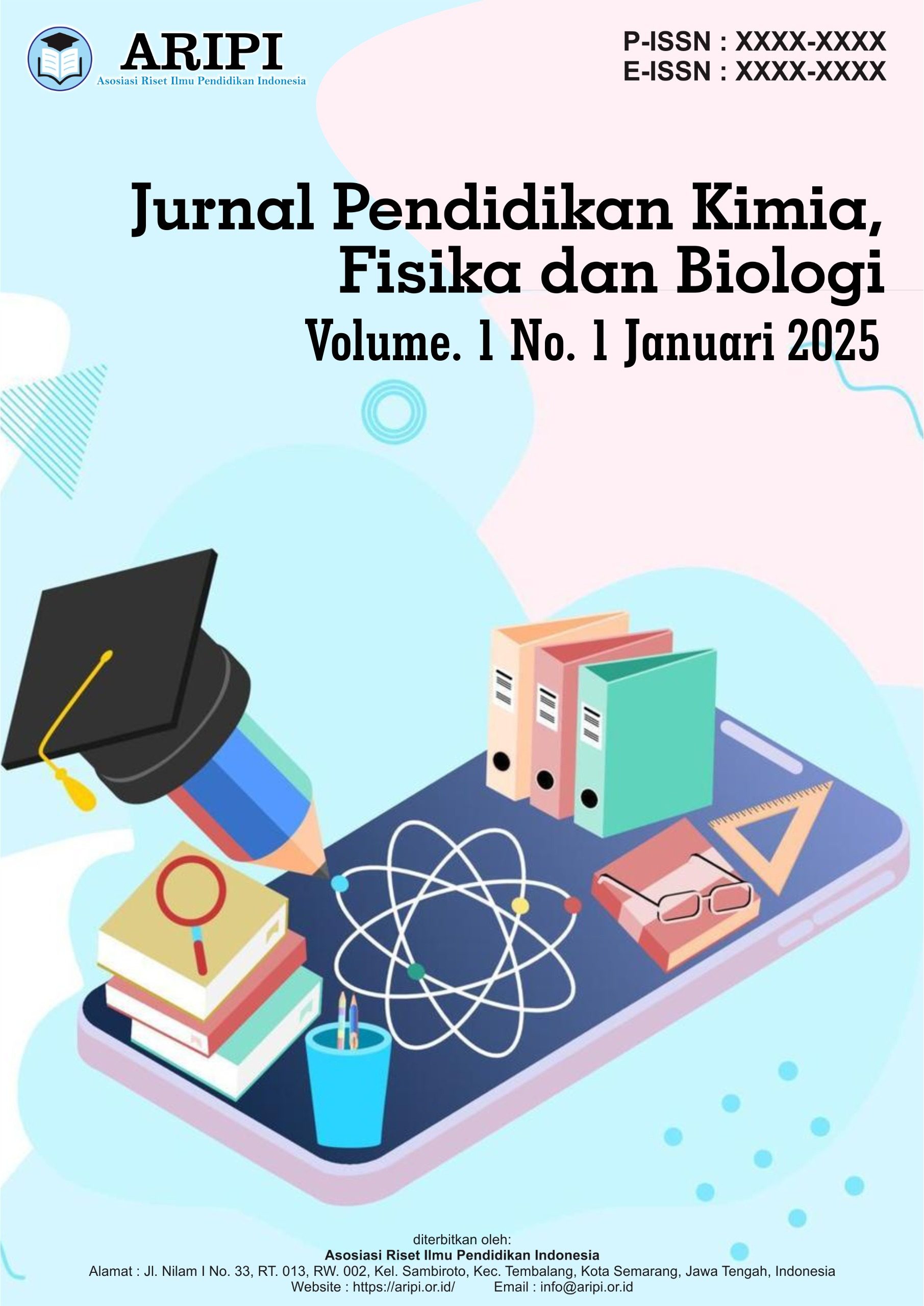Implementasi Pembelajaran Berbasis Proyek dalam Materi Ekologi untuk Meningkatkan Keterampilan Berpikir Kritis Siswa
DOI:
https://doi.org/10.61132/jupenkifb.v1i1.165Keywords:
Ecology, learning innovation, project-based learning, biology education, critical thinkingAbstract
This study aims to examine the effect of project-based learning on students' critical thinking skills in studying ecology. The background of this study is the need for innovative learning methods that can improve students' analytical skills in understanding ecological concepts. The method used is experimental research with a pretest-posttest design. Data were collected through observation and critical thinking skills tests before and after learning. The results showed a significant increase in students' critical thinking skills after the implementation of project-based learning. These findings indicate that project-based learning can be an effective strategy in improving students' critical thinking skills in biology education.
References
Arends, R. I. (2012). Learning to teach. McGraw-Hill.
Barron, B., Schwartz, D. L., Vye, N. J., Moore, A., Petrosino, A., Zech, L., & Bransford, J. D. (1998). Doing with understanding: Lessons from research on project-based learning. Journal of the Learning Sciences, 7(3-4), 271-311. https://doi.org/10.1207/s15327809jls0703&4_2
Begon, M., Townsend, C. R., & Harper, J. L. (2006). Ecology: From individuals to ecosystems. Wiley-Blackwell.
Bell, S. (2010). Project-based learning for the 21st century: Skills for the future. The Clearing House: A Journal of Educational Strategies, Issues and Ideas, 83(2), 39-43. https://doi.org/10.1080/00098650903505415
Blumenfeld, P. C., Soloway, E., Marx, R. W., Krajcik, J. S., Guzdial, M., & Palincsar, A. (1991). Motivating project-based learning: Sustaining the doing, supporting the learning. Educational Psychologist, 26(3-4), 369-398. https://doi.org/10.1080/00461520.1991.9653139
Braun, V., & Clarke, V. (2006). Using thematic analysis in psychology. Qualitative Research in Psychology, 3(2), 77-101. https://doi.org/10.1191/1478088706qp063oa
Capraro, R. M., Capraro, M. M., & Morgan, J. R. (2013). STEM project-based learning: An integrated science, technology, engineering, and mathematics (STEM) approach. Springer.
Creswell, J. W. (2014). Research design: Qualitative, quantitative, and mixed methods approaches (4th ed.). SAGE Publications.
Dole, S., Bloom, L., & Kowalske, K. (2016). Transforming pedagogy: Changing perspectives from teacher-centered to learner-centered. Interdisciplinary Journal of Problem-Based Learning, 10(1), 1-15. https://doi.org/10.7771/1541-5015.1538
Ennis, R. H. (2011). The nature of critical thinking: An outline of critical thinking dispositions and abilities. Inquiry: Critical Thinking Across the Disciplines, 26(1), 4-18. https://doi.org/10.5840/inquiryct20112613
Facione, P. A. (2011). Critical thinking: What it is and why it counts. Insight Assessment.
Fraenkel, J. R., Wallen, N. E., & Hyun, H. H. (2012). How to design and evaluate research in education (8th ed.). McGraw-Hill.
Hake, R. R. (1999). Analyzing change/gain scores. American Educational Research Association (AERA) Conference Paper.
Harlen, W. (2010). Principles and big ideas of science education. Association for Science Education.
Hmelo-Silver, C. E. (2004). Problem-based learning: What and how do students learn? Educational Psychology Review, 16(3), 235-266. https://doi.org/10.1023/B:EDPR.0000034022.16470.f3
Holbrook, J., & Rannikmae, M. (2007). The nature of science education for enhancing scientific literacy. International Journal of Science Education, 29(11), 1347-1362. https://doi.org/10.1080/09500690601007549
Kolodner, J. L. (2006). Case-based reasoning. In R. K. Sawyer (Ed.), The Cambridge handbook of the learning sciences (pp. 225-242). Cambridge University Press.
Krajcik, J. S., & Blumenfeld, P. C. (2006). Project-based learning. In R. K. Sawyer (Ed.), The Cambridge handbook of the learning sciences (pp. 317-334). Cambridge University Press.
Larmer, J., & Mergendoller, J. R. (2010). Seven essentials for project-based learning. Educational Leadership, 68(1), 34-37.
Lou, Y., Abrami, P. C., & d’Apollonia, S. (2001). Effects of within-class grouping on student achievement: An exploratory model. The Journal of Educational Research, 94(2), 101-112. https://doi.org/10.1080/00220670109599910
Odum, E. P. (2005). Fundamentals of ecology (5th ed.). Cengage Learning.
Piaget, J. (1950). The psychology of intelligence. Routledge.
Prince, M. J., & Felder, R. M. (2006). Inductive teaching and learning methods: Definitions, comparisons, and research bases. Journal of Engineering Education, 95(2), 123-138. https://doi.org/10.1002/j.2168-9830.2006.tb00884.x
Savery, J. R. (2006). Overview of problem-based learning: Definitions and distinctions. Interdisciplinary Journal of Problem-Based Learning, 1(1), 9-20. https://doi.org/10.7771/1541-5015.1002
Strobel, J., & van Barneveld, A. (2009). When is PBL more effective? A meta-synthesis of meta-analyses comparing PBL to conventional classrooms. Interdisciplinary Journal of Problem-Based Learning, 3(1), 44-58. https://doi.org/10.7771/1541-5015.1046
Thomas, J. W. (2000). A review of research on project-based learning. The Autodesk Foundation.
Vygotsky, L. S. (1978). Mind in society: The development of higher psychological processes. Harvard University Press.
Wurdinger, S. D., & Carlson, J. A. (2010). Teaching for experiential learning: Five approaches that work. Rowman & Littlefield Publishers.





